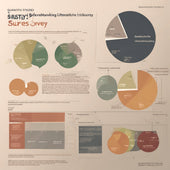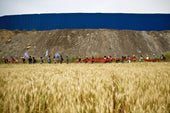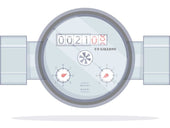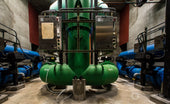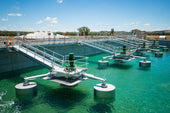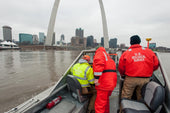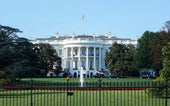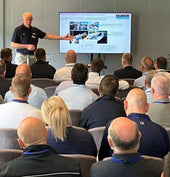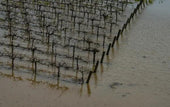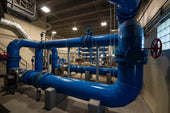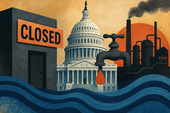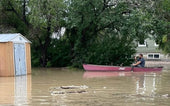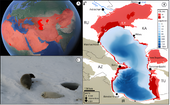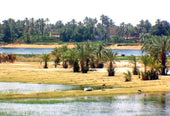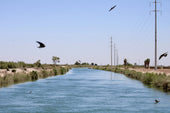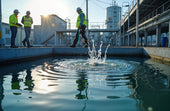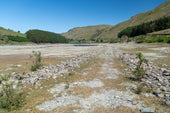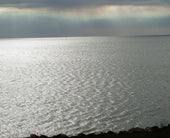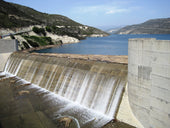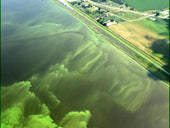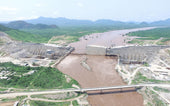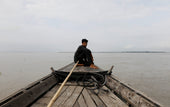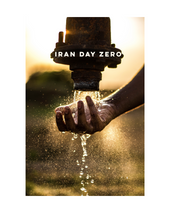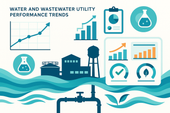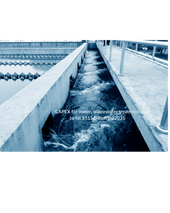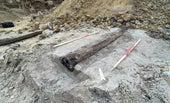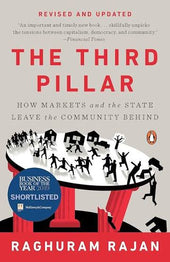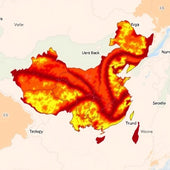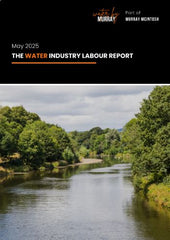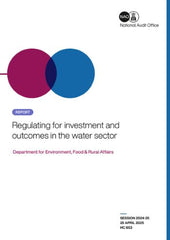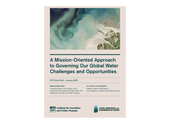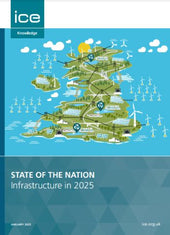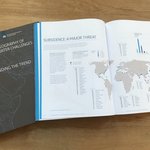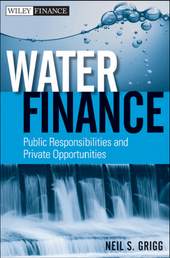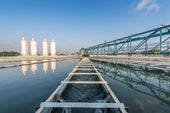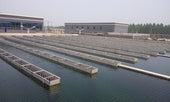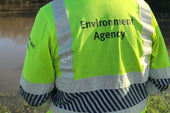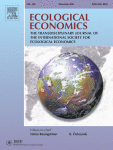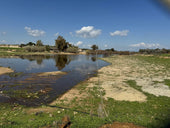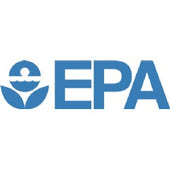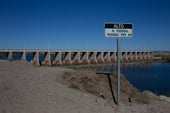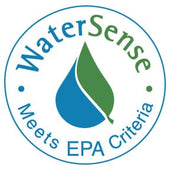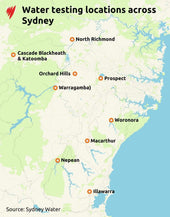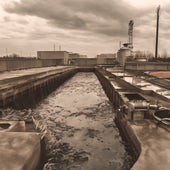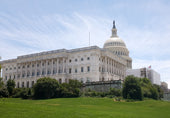
Beyond Operational Data: Peter Drucker's Strategic Information Framework for Water Utility Leadership

Water utility benchmarking specialist focused on performance analytics and operational efficiency optimization.
How water utilities can transform from data-rich but insight-poor organizations into strategically intelligent enterprises
The Information Paradox in Water Utilities
Water utilities generate enormous amounts of data daily—flow rates, pressure readings, water quality metrics, customer consumption patterns, maintenance schedules, and financial performance indicators. Yet despite this wealth of operational information, many utility leaders find themselves struggling to answer fundamental strategic questions: How will climate change reshape our service territory? What emerging technologies should we prioritize? How do we anticipate regulatory changes before they impact operations?
This disconnect between data abundance and strategic clarity reflects what management pioneer Peter Drucker identified as a critical distinction in organizational information systems. As Drucker observed, "The fours kinds of information tell us only about the current business. They inform and direct tactics. For strategy, we need organized information about the environment."¹
For water utilities facing unprecedented challenges from aging infrastructure, climate variability, regulatory evolution, and changing customer expectations, Drucker's framework offers a roadmap for building truly strategic information capabilities.
The Four Foundations of Operational Intelligence
Drucker identifies four essential types of operational information that every organization needs:
1. Foundation Information: Financial Performance For water utilities, this includes traditional metrics like revenue per customer, operating ratios, and debt service coverage. These fundamentals remain crucial for regulatory compliance and financial stability.
2. Productivity Information Through Benchmarking Drucker emphasized that "The most recent of the tools used to obtain productivity information is benchmarking - comparing one's performance with the best performance in the industry or, better yet, with the best anywhere in the business."³ For water utilities, the American Water Works Association (AWWA) QualServe program exemplifies this approach, allowing utilities to compare operational metrics with similar systems nationwide.
3. Total-Factor Productivity: Beyond Simple Metrics Drucker's concept of Economic Value Added (EVA) represents a sophisticated approach to performance measurement. As he explains, "The measuring the value added over all costs, including the cost of capital, EVA measures, in effect, the productivity of all factors of production."² This challenges utilities to think holistically about resource allocation beyond traditional engineering metrics.
4. Resource Allocation Intelligence Understanding where investments generate the highest returns across all organizational activities, from infrastructure maintenance to customer service improvements.
While these operational metrics are essential, Drucker emphasizes they "tell us only about the current business. They inform and direct tactics. For strategy, we need organized information about the environment."⁴ He specifically identifies that strategy must be "based on information about markets, customers, noncustomers; about technology in one's own industry and others; about worldwide finance; and about the changing world economy."⁵
The Strategic Information Gap
Most water utilities excel at operational intelligence but struggle with strategic environmental scanning. Drucker recognized this challenge, noting that "Even big companies, in large part, will have to hire outsiders to help them. To think through what the business needs requires somebody who knows and understands the highly specialized information field."⁶ Consider the challenges facing utility leaders today:
- Regulatory Evolution: How will emerging PFAS regulations impact treatment requirements and costs?
- Climate Adaptation: What infrastructure investments will prove resilient under changing precipitation patterns?
- Technology Integration: When should utilities invest in smart meters, advanced analytics, or alternative water sources?
- Customer Evolution: How are demographic shifts and conservation consciousness changing demand patterns?
These questions require what Drucker calls "organized information about the environment"—intelligence about markets, customers, technology trends, regulatory developments, and economic forces beyond the utility's direct control.
The "Insider Outsider" Solution
Drucker anticipated that organizations would need external expertise to develop strategic environmental intelligence. He recognized that "There is far too much information for any but specialist to find their way around. The sources are totally diverse."⁷ For water utilities, this insight is particularly relevant given the sector's unique regulatory, technical, and operational complexities.
For water utilities, this might involve:
Specialized Information Services: Organizations that track regulatory trends, technology developments, and best practices specifically for the water sector—going beyond simple data provision to offer strategic interpretation and business implications.
Interactive Consultation: Services that don't just deliver reports but engage utility leadership in questioning assumptions, testing strategies, and exploring scenarios. As Drucker emphasizes, "To supply data is not enough. The data have to be integrated with strategy, they have to test a company's assumption, and they must challenge a company's current outlook."⁸
Technology Integration: Modern analytics platforms and AI systems can process vast amounts of environmental data, but as Drucker observed, "What is important is not the tools. It is the concepts behind them."⁹ The real value comes from strategic interpretation—understanding what trends mean for specific utility contexts and decision-making processes.
From Postmortem to Prediction
Drucker's most profound insight may be his reconceptualization of information's purpose. He argues for viewing information "as a measurement on which to base future action rather than a postmortem and a record of what has already happened."¹⁰ This fundamental shift from reactive to predictive thinking could transform utility decision-making:
- Infrastructure Planning: Moving from break-fix maintenance to predictive asset management based on performance trends and risk analysis
- Financial Strategy: Anticipating rate adjustment needs before financial stress occurs
- Regulatory Compliance: Preparing for regulatory changes before they're mandated
- Customer Engagement: Understanding evolving customer needs and preferences to improve service delivery
Building Strategic Intelligence Capabilities
Water utility leaders can apply Drucker's framework by:
-
Auditing Current Information Systems: Distinguish between operational data (tactics) and strategic intelligence (environment). Most utilities will discover significant gaps in environmental scanning capabilities.
-
Investing in External Intelligence: Develop relationships with specialized consultants, industry analysts, and information services that understand the water sector's unique challenges and opportunities.
-
Creating Integration Processes: Establish regular strategic planning sessions that explicitly connect environmental intelligence with business strategy, challenging existing assumptions and exploring alternative scenarios.
-
Developing Predictive Capabilities: Transform information systems from historical reporting to forward-looking analysis that supports proactive decision-making.
-
Building Learning Organizations: Create cultures that value questioning, testing assumptions, and adapting strategies based on new environmental intelligence.
The Strategic Imperative
As water utilities face increasing complexity—from climate change and aging infrastructure to evolving customer expectations and regulatory requirements—the ability to gather, interpret, and act on strategic environmental intelligence becomes a core competitive advantage.
Drucker's framework reminds us that while operational excellence remains essential, strategic leadership requires a fundamentally different approach to information. Utilities that master this distinction will be better positioned to anticipate challenges, identify opportunities, and deliver sustainable value to the communities they serve.
Drucker also recognized the value of "integrated information system[s]" that "convert what were always seen as discrete techniques to be used in isolation and for separate purposes into one integrated information system. That systems then makes possible business diagnosis, business strategy, and business decisions."¹¹
Bibliography
American Water Works Association. (2023). QualServe Benchmarking Program: Performance Indicators for Water Utilities. AWWA Publications.
Drucker, P. F. (2001). The Essential Drucker: The Best of Sixty Years of Peter Drucker's Essential Writings on Management. HarperBusiness.
Drucker, P. F. (1995). "The Information Executives Truly Need." Harvard Business Review, 73(1), 54-62.
Environmental Protection Agency. (2024). Climate Adaptation Strategies for Water Utilities. EPA Office of Water.
Flack, J. E., & Weakley, W. (2019). "Strategic Asset Management in Water Utilities: Moving Beyond Compliance." Journal of the American Water Works Association, 111(8), 24-31.
Hughes, D., & Morrison, K. (2023). "Digital Transformation in Water Utilities: From Data to Strategic Intelligence." Water Finance & Management, 34(5), 12-18.
National Association of Water Companies. (2024). Regulatory Trends and Strategic Planning for Water Utilities. NAWC Research Report.
Porter, M. E. (1985). Competitive Advantage: Creating and Sustaining Superior Performance. Free Press.
Water Research Foundation. (2023). Emerging Technologies and Strategic Decision-Making in Water Utilities. WRF Report #4856.
Water Environment Federation. (2024). "Strategic Planning for Utility Resilience: Environmental Intelligence and Scenario Planning." Water Environment & Technology, 36(3), 38-44.





